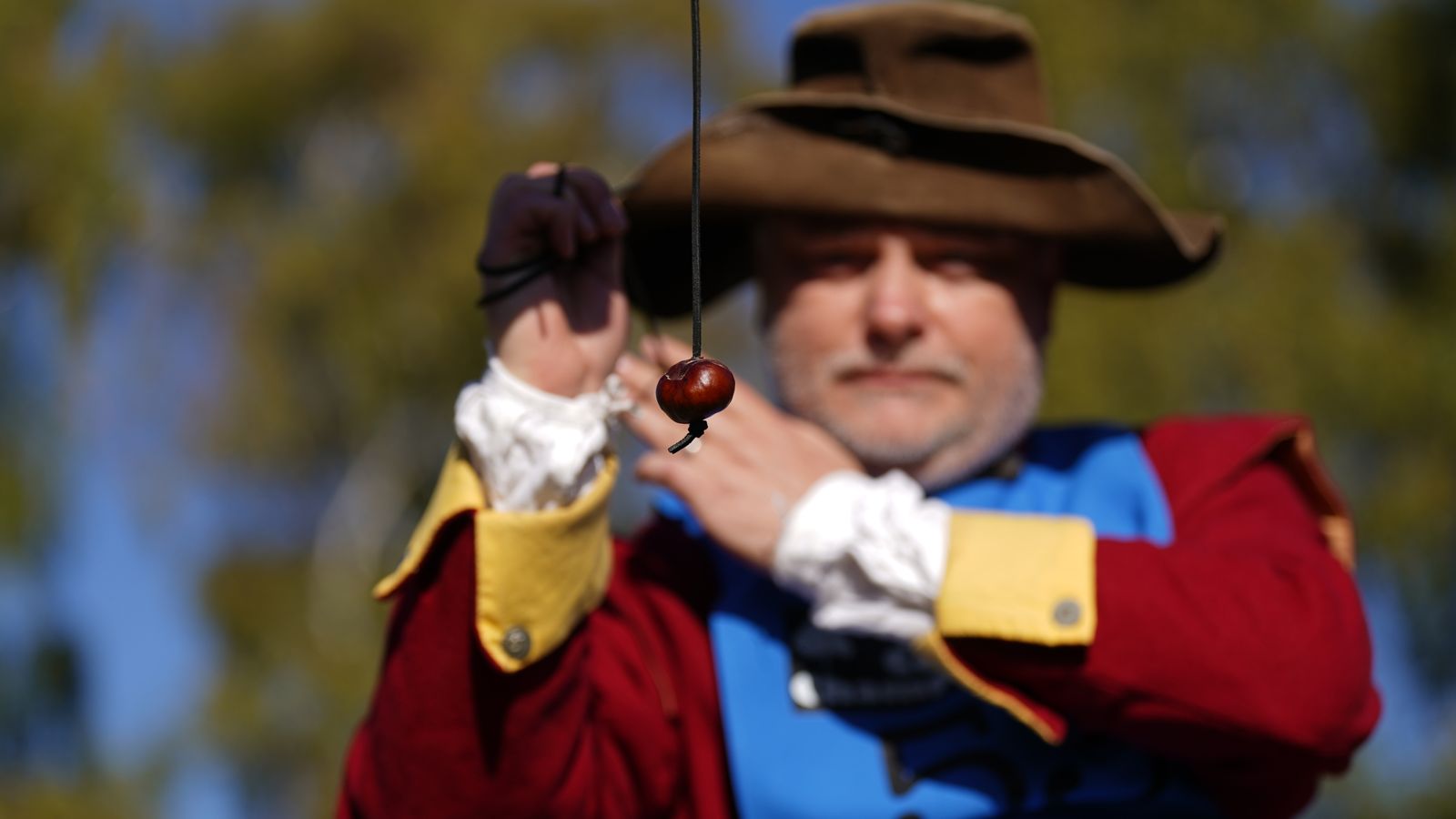More than 300 competitors, watched by 5,000 spectators, have taken part in the World Conker Championships – back after a COVID hiatus.
No costume was off limits for the event which took place at the Shuckburgh Arms pub in Southwick, Northamptonshire, on Sunday.
Stephanie Withall – a previous champion – donned a bee outfit to pay homage to her job as a beekeeper.
There was also an Elvis lookalike, a Spider-Man, and a competitor dressed as a beer bottle.
Chelsea Pensioners got in on the action too, including 92-year-old John Riley.
All competitors need to follow a stringent set of rules to ensure the event is as fair as possible, which includes the conkers and laces used being provided by organisers, while laces cannot be knotted further or altered.
That old chestnut
This obviously rules out soaking conkers overnight in vinegar, a popular strengthening trick used by 1970s schoolchildren, who saw the onset of conker season as being as important as the start of the football and cricket seasons.
Additionally, a minimum length of no less than 20cm of lace must be between knuckle and nut for both the “striking” and “receiving” players.
Conkers, which are the seed of the horse chestnut tree, are also drawn “blind” from a bag, with players being allowed to reject up to three.
A coin is tossed to decide who goes first
You must hold your conker at the height your opponent chooses – and keep it perfectly still
The striker is allowed three shots and then the players swap roles
If the strings tangle, the first player to call “snags” gets an extra shot
The game is won when one player destroys the other’s conker
To win, the opponent’s conker must be smashed and if both are broken at the same time, new conkers are drawn.
Further rules apply if a game lasts more than five minutes and penalties can also be given out for foul play.
Aside from the fun people have at the event, the main aim of the championships is to support charities helping the visually impaired.
Since the event’s inception in 1965, a total of £420,000 has been raised.
The source of conkers is the horse chestnut tree, which was first introduced to Britain from the Balkans in the late 16th century.
It was not until about 200 years later that their fruits were used to play the game of conkers. Before that, conkers was played with hazel or cob nuts or snail shells.
The horse chestnut flowers from April to May and the flower-spikes are popularly known as ‘candles’, as they seem to light up the tree. The fruits develop in prickly cases and ripen in September and October.
The tree earned its name for two reasons. Firstly, the fruits were fed to horses in the East as a stimulant and to make their coat shine. Secondly, the leaf-scars on the twigs have the shape of a horseshoe, including the nail holes.
The National Woodland Inventory of Woodland Trees estimates there are 470,000 horse chestnut trees in Great Britain.
Conkers have also been carried in the pocket to help prevent piles and rheumatism.
There is also a claim they are an effective way to keep spiders out of a house when placed in the corners of rooms.
According to the World Conker Championship organisation, the first recorded game of conkers is believed to have taken place in the Isle of Wight in 1848, while the World Championships started in Ashton, Northamptonshire, in 1965, on the village green which is surrounded by horse chestnut trees.
In the end, the women’s event was won by Fee Aylmore, who had been trying to win for 32 years, and the men’s competition by Randy Topolinski from Calgary in Canada – world conkerers, both of them.
Ms Aylmore, 49, a school nurse who lives a few miles from Southwick, said that she was delighted.
She said: “If you want something badly enough, keep doing it.”
“It took me 31 years of playing but eventually I won this year and I am totally thrilled.”






















